The Fleur de Lis: France’s Royal Emblem
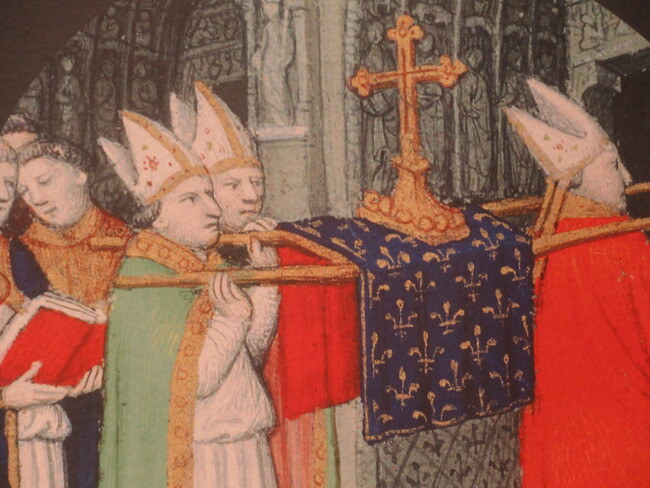

- SUBSCRIBE
- ALREADY SUBSCRIBED?
BECOME A BONJOUR PARIS MEMBER
Gain full access to our collection of over 5,000 articles and bring the City of Light into your life. Just 60 USD per year.
Find out why you should become a member here.
Sign in
Fill in your credentials below.
Once you start noticing the fleur-de-lis symbol, you will see it everywhere: in paintings, on the façade of buildings, as part of painted or carved decorations and on many a stained-glass window. The first of May, when that other well-known French lily, the muguet, or lily of the valley, is so much in evidence seems a good moment to wonder about the origins of the fleur-de-lis. It’s a story which reaches so far back into history that some of the details are a little hazy, but here are 10 questions for which we do have some answers, even though sometimes it’s a case of “maybe this, or maybe that.”
1. Is the fleur-de-lis actually a lily?
Even this is unclear! The traditional version is usually thought to be based on the lily, albeit in a highly stylized version, but it does have to be said although the fleur-de-lis is usually yellow or golden, traditional lilies are generally white. Another theory is that the original flower may actually have been a wild iris.

Flag of France during the Renaissance. Public domain
2. Where does the name fleur-de-lis come from?
Again, there are a number of possibilities. Fleur-de-lis (also sometimes spelled fleur-de-lys) translates literally as “lily flower,” so for many people that explains the derivation. Others think the name is a corruption of fleur de Louis, which would be appropriate because of the symbol’s royal connection. Alternatively, it could be a reference to the River Lys which flows through northern France and Belgium, especially as wild yellow irises, which resemble the flowers on the fleur-de-lis emblem, used to grow along its banks in great quantities.

Yellow Iris pseudacorus flowers. Photo: Rosa-Maria Rinkl/ Wikimedia Commons
3. Does the fleur-de-lis have a religious significance?
The lily most certainly does. It has long been identified with the Virgin Mary as a symbol of purity, especially in the Roman Catholic church. Also, the three petals of the fleur-de-lis have sometimes been described as representing the Holy Trinity. It’s thought that by adopting the fleur-de-lis as their symbol, French kings were allying themselves with the church and emphasizing their divine right to rule.
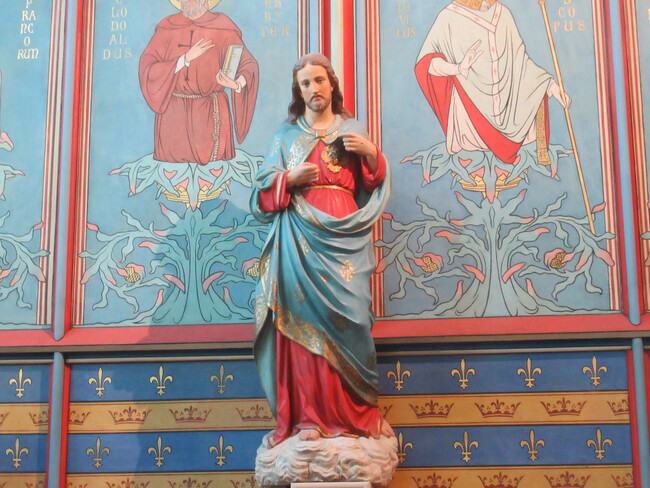
St Louis Chapelle at Notre Dame. Photo: Marian Jones
4. Was France the first country to use this symbol?
No! Similar symbols have been found in ancient civilizations, in Mesopotamian art for example and on Greek and Roman coins. But it is through its connection with medieval French royalty that it is best known today.

Clovis receiving the fleur de lis. Illumination, 15th century. British Library. Public domain
5. How did the connection between French royalty and the fleur-de-lis begin?
It all started with Clovis, the first king of France, who reigned in the late 5th and early 6th centuries. Legend has it that Clovis was given a lily when he was baptized after converting to the Christian faith and that the flower was also used in his coronation. Some versions say the flower came from the Virgin Mary herself, others relate that the king was anointed with oil poured from a flask shaped like a lily.
There are other stories linking Clovis and the yellow iris, for example that when he needed to lead his army safely over a river to escape the enemy, he chose a spot where the flowers grew in abundance, knowing that the water there would be shallow. Perhaps he also wore the flower on his helmet, maybe the fleur-de-lis appeared miraculously on his shield just before a battle in which he was to prove victorious. Whatever the truth, the link between Clovis and the lily (or iris!), and by extension between royalty and the fleur-de-lis symbol, was firmly established and later monarchs continued to use it.

Coronation of Louis VIII and Blanche of Castille at Reims in 1223. BNF. Public domain
6. What role did it play in later periods of history?
History tells us that the fleur-de-lis was prominent throughout the medieval period, appearing for example in many works of art. Philippe I was painted in 1060 holding a staff with a fleur-de-lis on the end, and Louis VII, who reigned from 1137-80, used the fleur-de-lis on the shield he took into battle. He also ordered that at his son Philippe II’s coronation the new monarch should wear blue shoes patterned with golden flowers. In 1429 Jeanne d’Arc rode under a white banner which showed God blessing the fleur-de-lis, signifying that she was fighting in support of French royalty. Depictions of the Te Deum for Henri IV in 1594 at Notre Dame clearly show a cross being carried into the service on a blue cloth embroidered with golden fleur-de-lis.
The fleur-de-lis was used on the royal flag until the revolution, when it was replaced by the tricolore. That wasn’t quite the end of the story, as attempts were made to restore the royal emblem, but they did not last. Napoleon used the symbol on his imperial throne, as a way of establishing his authority and right to rule. After the collapse of the Second Empire in 1870, the idea of Henri, Count of Chambord becoming king was a possibility, but his idea that the tricolore would have to be replaced by the former French flag with its royal emblem was rejected. France was to become a republic and the fleur-de-lis would now be consigned to history.
7. How did the design evolve?
After Clovis, when the idea of the flower as a royal symbol was established, the royal coat of arms gradually took on the form of a blue shield, scattered with small golden flowers. By the time of Louis IX, who reigned from 1226-70, the flower had become more stylized. It now had three petals which were sometimes said to represent the virtues of faith, wisdom and chivalry and to be a sign of divine favor bestowed on the king and therefore on France. In the late 14th century Charles V modified the design again, so the flowers appeared in a group of three, still retaining the gold-on-blue colorway.
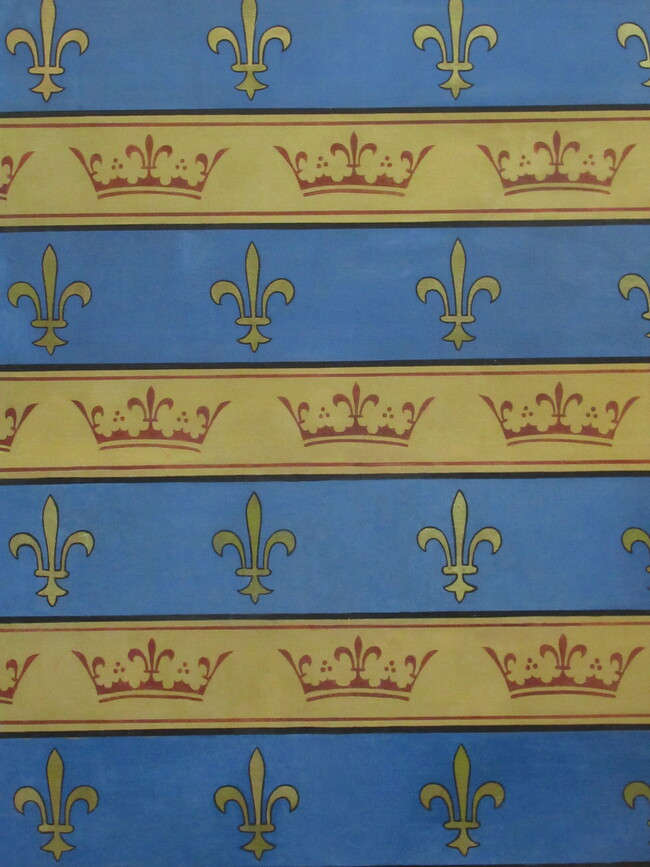
St Louis Chapelle at Notre Dame. Photo: Marian Jones
8. Is the fleur-de-lis connected to May Day in France?
Sort of. The muguet tradition, when people gift small bunches of lily of the valley as a sign of affection on May 1st, does have a royal connection, but the link is to the flower itself, rather than the fleur-de-lis symbol. In 1561, Charles IX was given a little bunch of lilies of the valley and was so charmed by them that he decided to offer a similar present to all the ladies of his court. It then became a tradition for men to copy him and give the ladies in their life a similar gift in the hope of bringing them luck for the coming year.
9. Is the fleur-de-lis symbol still used today?
Yes, it’s retained as a historical link in the coat of arms of many French cities and départements, not least Paris itself. Above the city’s Latin motto, fluctuat nec mergitur (“She is tossed by the waves, but does not sink”) and the picture of a silver ship, there is a band of color: a royal blue background, dotted with golden fleur-de-lis. Other cities which feature the symbol in blue and gold on their coat of arms include Bordeaux, Lyon and Orléans. Sometimes, the symbol has inspired the design, but differently, as is the case for Lille, where a white fleur-de-lis appears on a red background.
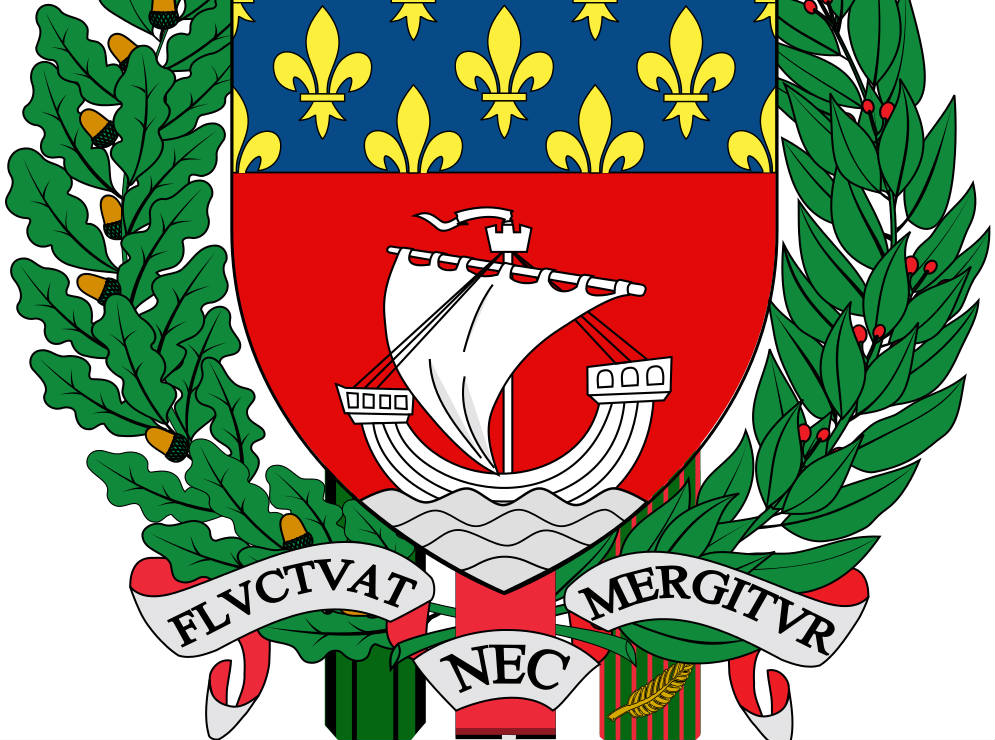
Paris Coat of Arms. Photo: Wikimedia/ Bluebear2
10. Where can you see the fleur-de-lis today?
The best advice is simply to keep your eyes open, especially when visiting anywhere with a royal history. At Fontainebleau, for example, you can see lavish carvings of it in the Gallery of Francis, where it is picked out in gold alongside the king’s initial, F and representations of the salamander which was his own personal emblem. Elsewhere in the château is Napoleon’s Throne Room, where you’ll see that the golden throne is upholstered in a rich velvet fleur-de-lis design.
In the Chapel of St Louis inside Notre Dame Cathedral there’s a very royal border all along the back wall: stripes of blue with golden fleur-de-lis alternate with golden stripes featuring a design of crowns. At the Château de Vincennes, you’ll see the design carved into the main gateway and there is a stunning example on a stained-glass window in the little chapel at Saint-Germain-en-Laye.
France today is of course a fiercely proud republic, but the beautiful fleur-de-lis, remains as a reminder of her royal past. It’s something to look out for at any time of year, but most especially on le premier mai, or May Day, when little bunches of lilies are to be found everywhere.
Lead photo credit : Te Deum for Henri IV at Notre Dame 1594. Photo by Marian Jones
More in May
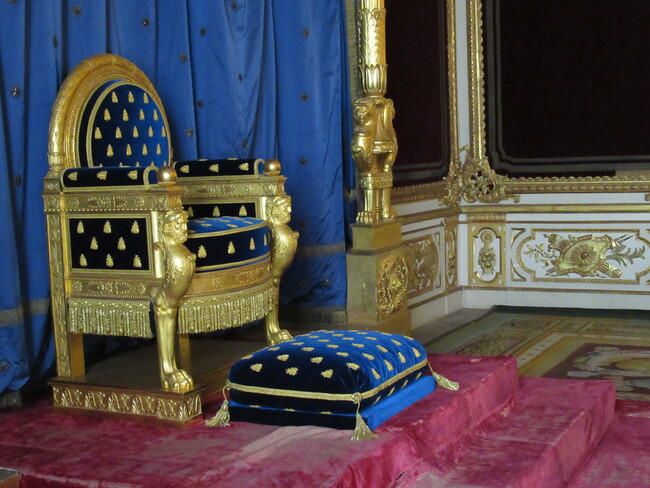
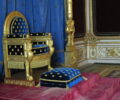
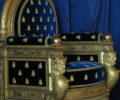



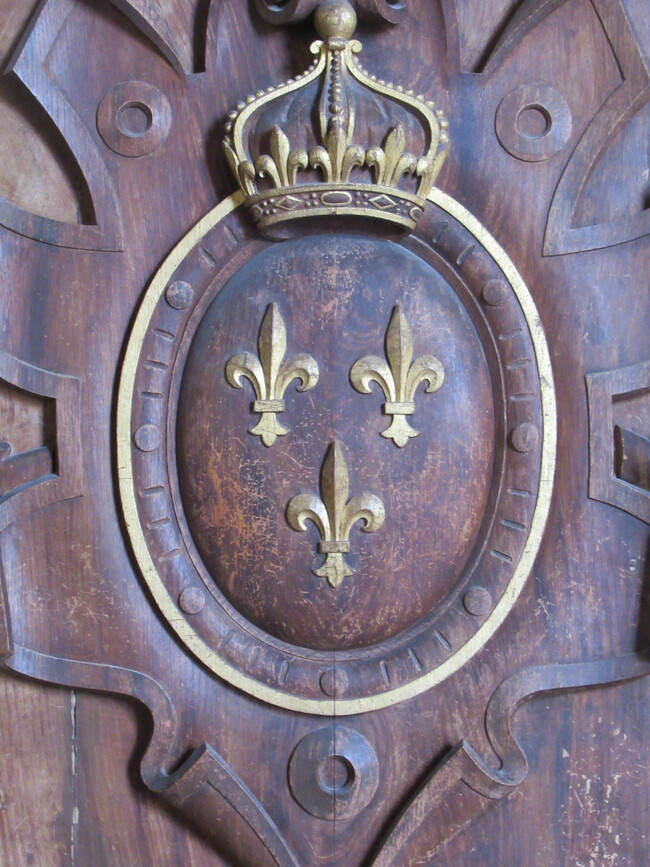
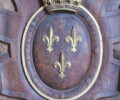




REPLY
REPLY